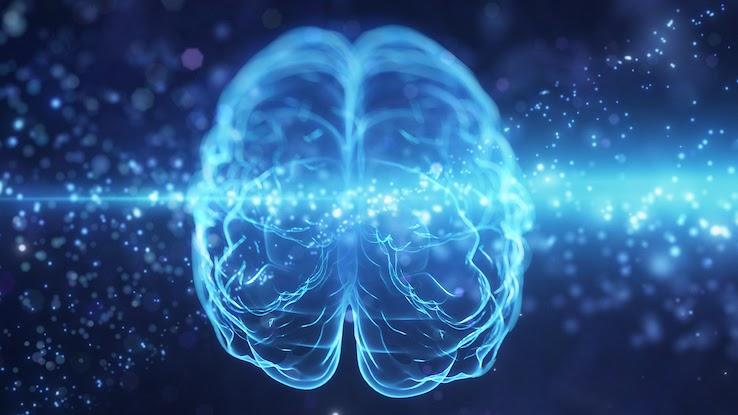
Psychedelic therapy, also known as psychedelic-assisted psychotherapy (PAP), combines traditional talk therapy with a psychedelic substance, such as LSD, psilocybin, ayahuasca, or MDMA. Extensive research on the use of these conscious-altering drugs is currently underway and has shown promising results for treating a variety of serious medical conditions.
In fact, early research has been so encouraging that the U.S. Food & Drug Administration (FDA) called psychedelic therapy a “breakthrough therapy” in 2019, suggesting that it might not be long before this experimental practice becomes more commonplace. So far, researchers have determined that some psychedelics, such as psilocybin, are safe to use as a supervised, clinical treatment and can produce substantial positive results when it comes to supporting a person’s mental health.
What Is Psychedelic Therapy?
Traditional psychiatric practice typically involves psychotherapy, where mental health professionals talk with patients in order to work through issues that are causing them emotional distress. Psychedelic therapy takes that a step further — or, at least, supplements talk therapy. In this practice, patients use psychedelic substances in combination with talk therapy to facilitate profound and lasting mental and behavioral change.
Although using psychedelics may seem like a newer concept in Western medicine, Indigenous communities have used psychedelics in both religious and therapeutic practices for centuries. On the other hand, psychedelic therapy has only reached clinical settings in the West more recently. In the 1950s, scientists began experimenting with the use of the psychedelic substance LSD to treat certain mood disorders and addiction. However, legal restrictions put that research to a halt in the ’60s, despite initial promising results.

In the ’90s, roughly 30 years after that research was halted, human psychedelic research resurfaced. The result? Researchers began using brain imaging technology in combination with clinical LSD and psilocybin trials, eager to see if the substances could provide treatment for depression. Since then, research into the potential of psychedelic therapy to treat serious medical conditions and mental illnesses has continued rather steadily.
Then, in 2019, when the FDA called psilocybin-assisted mental healthcare a “breakthrough therapy,” research into the potential of psychedelic substances began to speed up. Now, more and more clinical trials are looking into the use of psychedelic therapy to treat a wide range of mental illnesses and disorders. Thanks to the promising psychopharmacological studies underway, certain psychedelics have become increasingly legal as well.
How Does Psychedelic Therapy Work?
The patient ingests a set amount of a predetermined psychedelic drug and then proceeds with a talk therapy session. Because psychedelics alter a person’s consciousness, the therapist acts as a guide through the experience with the goal of interrogating specific mental health issues or obstacles.
Most commonly, there are three phases of psychedelic therapy. The first is preparation, where a therapist trained in psychedelic treatment gets to know the patient during several (unaltered) talk therapy sessions. The idea is to explore the patient’s individual nature and develop a strong sense of trust.

The second phase is the first session itself. During a psychedelic therapy session, the patient consumes the psychedelic substance. There is a lot of emphasis on both mindset and setting, so that the experience can be properly curated. Special attention must be paid to the patient’s mood and expectations — as well as how those things will interact with their personality and past experiences. By fostering trust, the therapist’s aim as a guide is to provide an inviting, open environment. In terms of setting, the physical environment is also important. In clinical trials, the setting often looks like a comfortable space, such as a living room, to provide an area that feels safe and relaxing. Sometimes, a carefully crafted playlist of music is played in the background. During the session, the therapist takes a non-assertive approach — mostly listening and offering support, assistance, and guidance when appropriate. Most sessions take roughly eight hours from start to finish.
In the days following the session, patients will embark on the final phase, which is referred to as integration. This phase involves conversations between the therapist and the patient that allow the patient space to process the session. The role of the therapist is to provide insight into what can be gleaned from the psychedelic experience. Overall, the intention of this type of therapy is to help the patient cope with their condition(s) or, in some cases, work toward healing.
The Different Kinds of Psychedelic Therapy Substances
Several different psychedelic substances are involved in psychedelic therapy research. These include the following:
- Psilocybin: Psilocybin is recreationally known as magic mushrooms. It is a hallucinogenic substance found in specific kinds of mushrooms. It alters one’s consciousness, perception, and mood. Psilocybin studies are looking into its potential for treating anxiety, depression, post-traumatic stress disorder, and addiction.
- LSD: Lysergic acid diethylamide (LSD) is a chemically-made hallucinogen that alters, consciousness, perception, and mood. Research shows that it may be useful for treating anxiety, post-traumatic stress disorder, and addiction.

- Ayahuasca, Mescaline, Peyote, and DMT: These four hallucinogenic substances can all be found naturally in different plant species. Their effects include altered perception, consciousness, and mood. Studies have shown their potential to treat depression, addiction, and anxiety.
- MDMA: Most commonly known as ecstasy, MDMA is a chemically-made drug that can induce euphoric feelings, altered perception, lowered inhibitions, and increased sociability and arousal. It may have therapeutic potential for treating post-traumatic stress disorder.
How Can Psychedelics Help?
The potential applications of psychedelic therapy appear to be rather varied based on current research. Some of the most common conditions, illnesses and disorders that may be treated with psychedelic therapy include the following:
- Post-traumatic stress disorder (PTSD): Research has shown that the psychedelic effect of MDMA, psilocybin, and LSD may be useful in treating PTSD, particularly in patients who have severe PTSD and show little improvement from other treatment options. Psychedelic therapy has provided promising results suggesting that PTSD patients have the potential to live comfortably with their PTSD.
- Anxiety, depression, and other mood disorders: A 2016 randomized, controlled, double-blind study found psilocybin to significantly reduce depression and anxiety in cancer patients. A 2021 report summarizes the research and potential of psychedelic therapy in treating mood disorders, showing promising results all around.

- Addiction: Substance abuse, including alcoholism, opiate addiction, and other forms of substance abuse have been consistently on the rise in the past century. Evidence from current research shows that LSD, psilocybin, and other plant-based psychedelics may be helpful in treating substance use disorders. For example, a 2017 study found that psychedelic therapy can lead to the long-term psychological changes needed to fully recover from addiction and reduce the risk of relapse.
- General well-being: Research shows that the use of psychedelic can also help one relax, make social connections, improve their introspectiveness, increase one’s empathy, and, in general, aid their overall well-being.
More clinical research consisting of much larger, controlled studies is necessary before any of these therapies are officially approved. In the meantime, psychedelic drugs will continue to be used for therapeutic research in clinical and non-clinical settings alike. So far, the results not only appear to be effective but long-lasting as well.
Potential Risks Associated With Psychedelic Therapy
Psychedelic substances are powerful and mind-altering. For this reason, their use in clinical, therapeutic settings could prove to provide significant mental health benefits. In fact, psychedelic drugs have been found to be extremely safe in clinical, supervised settings. Current data suggests negligible dependence and toxicity risks.

However, some psychological risks may limit who can safely engage in this type of therapy. For example, the use of psychedelic therapy is not considered safe for those with certain mood disorders, such as bipolar disorder. Furthermore, as psychedelic trips can cause anxiety, paranoia, and panic, this form of treatment may not be best for all personality types. It is up to the discretion of the mental health professionals to determine this alongside the patient.
Self-treatment, or the use of psychedelics in an unsupervised manner, can present psychological dangers to users. Without a properly curated environment and professional guide, psychedelic therapy may not have the desired results. Experiencing a “bad trip,” from the use of psychedelics is not uncommon, which can compound mental health issues rather than facilitate healing.
Resource Links:
- “Breakthrough Therapy” via U.S. Food & Drug Administration (FDA)
- “Psychotherapies” via National Institute of Mental Health (NIMH)
- “Ethical and legal issues in psychedelic harm reduction and integration therapy” via Harm Reduction Journal, BMC
- “The Therapeutic Potential of Psychedelic Drugs: Past, Present, and Future” via Neuropsychopharmacology, U.S. National Library of Medicine
- “Oregon becomes first state to legalize magic mushrooms as more states ease drug laws in ‘psychedelic renaissance'” via CNBC
- “Taking Psychedelics Seriously” via Journal of Palliative Medicine, Mary Ann Liebert, Inc.





